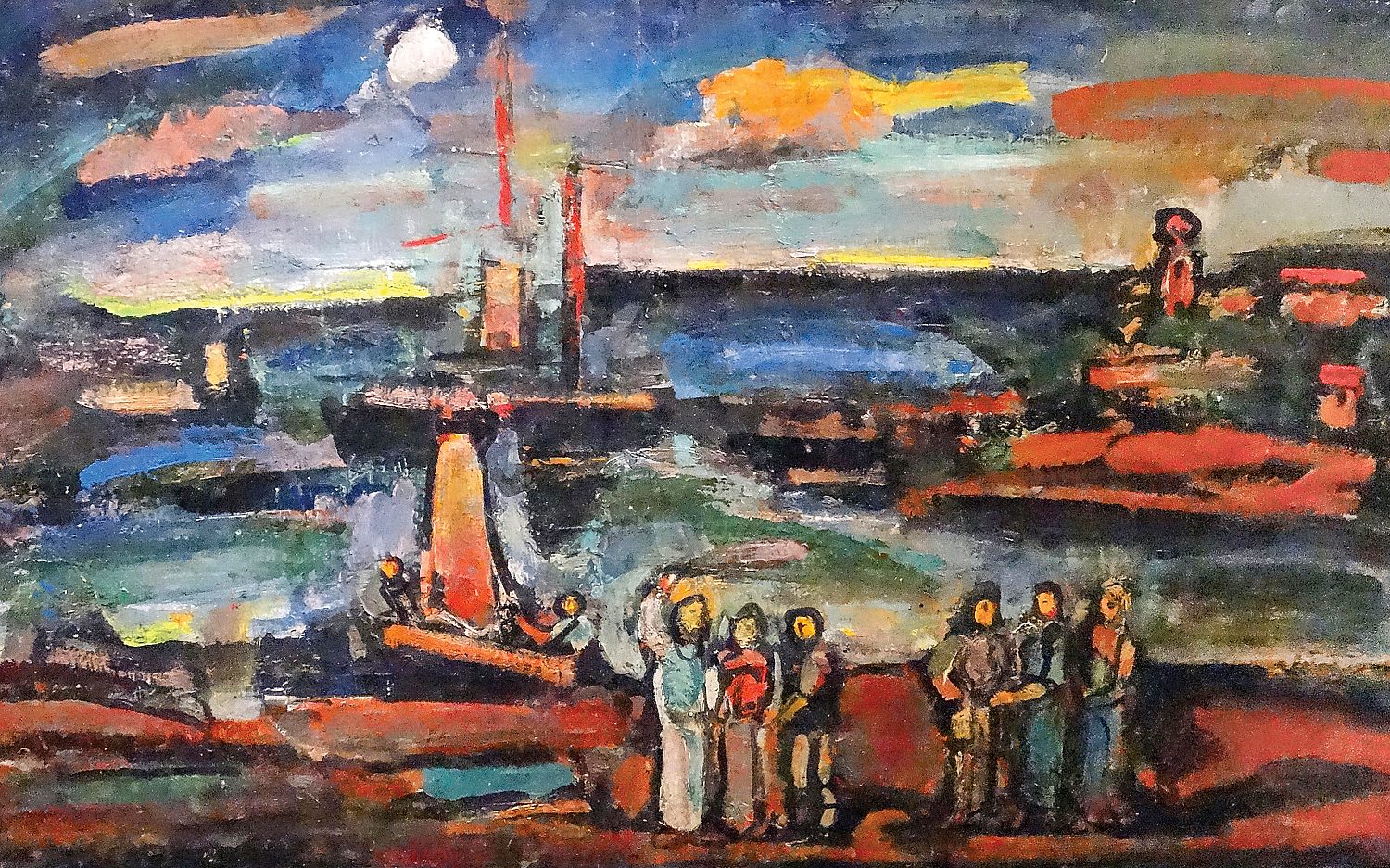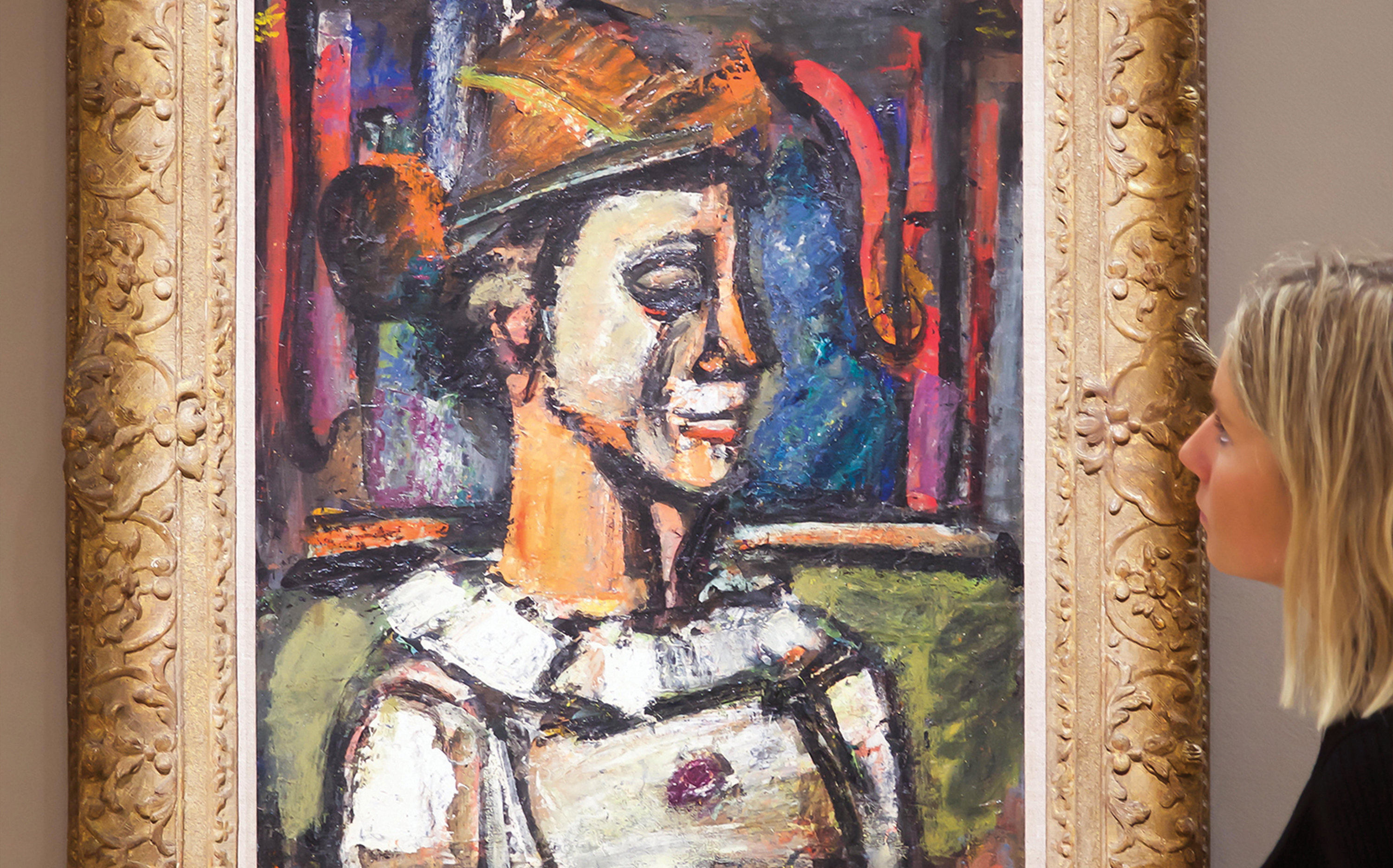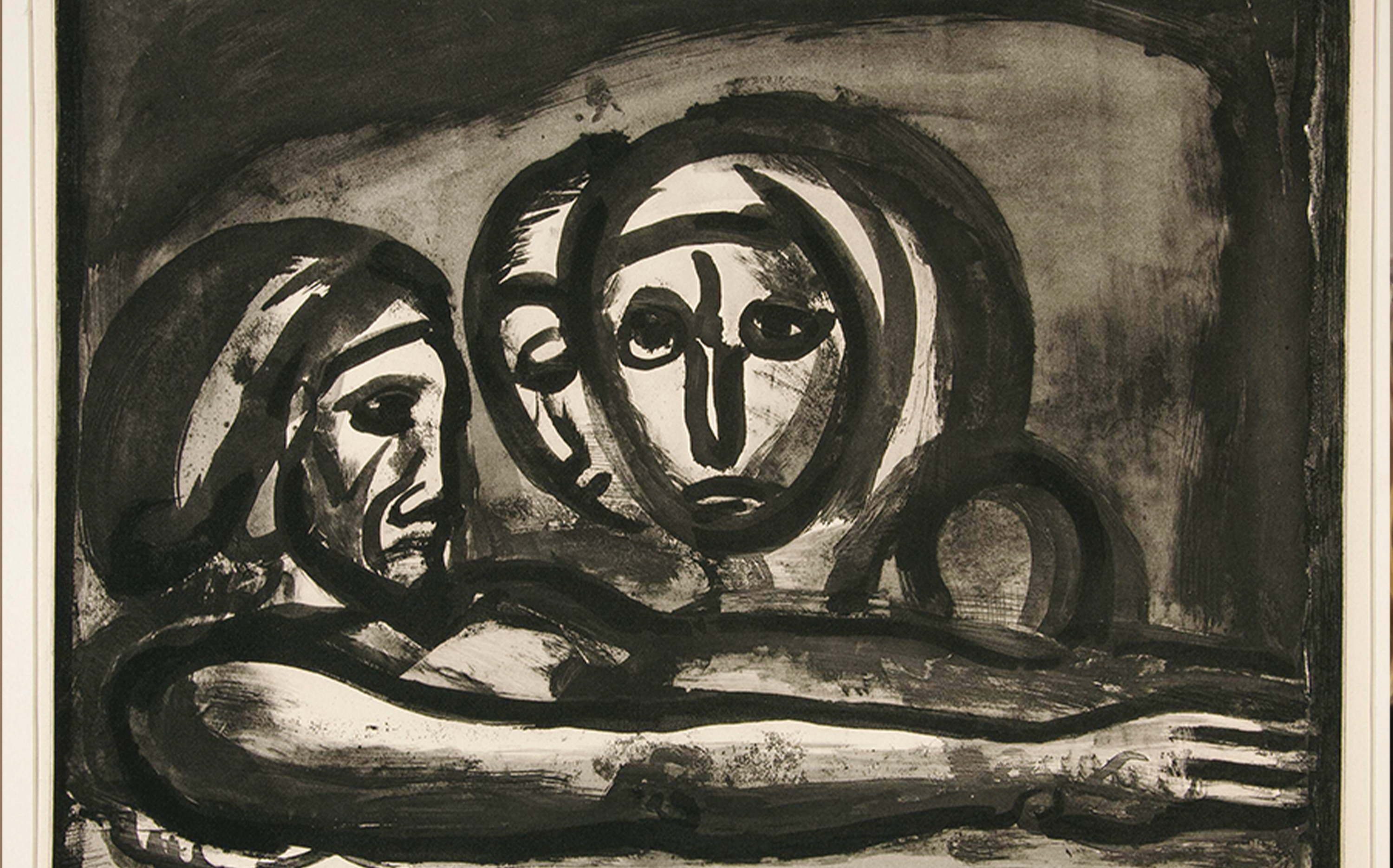The sacred modernist
MASTERWORKS | Georges Rouault’s faith through art
Christ et Pêcheurs (Christ and the Fisherman) World History Archive / Alamy

Full access isn’t far.
We can’t release more of our sound journalism without a subscription, but we can make it easy for you to come aboard.
Get started for as low as $3.99 per month.
Current WORLD subscribers can log in to access content. Just go to "SIGN IN" at the top right.
LET'S GOAlready a member? Sign in.
The French modernist painter Georges Rouault (d. 1958) was unique among 20th-century masters in his committed pursuit of religious imagery in his etchings, drawings, and paintings over many decades. His contemporaries (if they were believers at all) seldom directly addressed faith in their art. It is not so much that religious art had become taboo or antiquated, as some have theorized, but that art had, in many sophisticated European circles, replaced religion as a site of transcendence. Encounters with artistic works of genius became the new frontier of spiritual imagination for the intelligentsia. Despite the widespread rejection of sacred imagery, Rouault doggedly insisted on pursuing Biblical themes along with theologically rich subject matter. At the same time, churches had largely ceased commissioning great works of art and settled for kitsch or sentimental imagery—effectively banishing serious artists and their gifts from the sanctuary.
Rouault was trained by, and worked as an apprentice under, Gustave Moreau—a major figure in the Parisian art world in the late 19th century. Moreau is associated with the Symbolists, who avoided explicit religious imagery and drew rather upon dreams and fantasy, the Gothic, the fantastical, and the mythological—a movement led by such figures as Arthur Rimbaud and Charles Baudelaire in the literary world and Paul Gauguin and Odilon Redon in the art world.
In Moreau’s workshop, many secular commissions, public and private, were procured—and Rouault had the opportunity to work on several important ones, learning all his master’s techniques and developing a set of traditional drawing and painting skills. But he longed for greater meaning—a clearer connection to his faith in Christ and a more relevant imagery that could address the malaise of the times. He sought an art that might point toward the hope of the gospel afresh in the midst of terrible suffering brought about by World War I.
Given his desire to find a contemporary visual idiom for the sacred, Rouault gradually departed from his training in “realistic” representation—traditional illusionistic rendering—and began to paint more expressively, working and reworking paintings and etchings over and over until they acquired a patina of emotional weight. To stand before a Rouault painting is a very different thing than to see it in a book, on a computer screen, or in digital reproductions. The surface of his paintings reveals a thickly built-up topography of brush marks—each mark a record of an honest, earnest search for both meaning and fitting form.
In the Miserere (Have Mercy) series, Rouault’s magnum opus of more than 50 etchings (originally titled Miserere et Guerre—referring to the horrors of WWI), the artist addresses the perennial human dilemma of mortality, suffering in this world, and the search for hope and redemption. The subject matter in this magnificent suite of prints ranges from pilgrims to prostitutes; from memento mori (“remember death”), to circus personalities, to images of Jesus: the crucified, the glorified, the risen Savior. The artist worked on this suite of prints over a period of 30 years.
In Rouault’s oil paintings, the subjects vary from circus performers and street people to scenes from the life of Christ, the Virgin Mary, and other Biblical subjects. Often his works point toward the injustices suffered by marginal people—women forced into sexual slavery, destitute beggars, street urchins, clowns, the aged, and the many impoverished inhabitants of the modern city. Rouault always painted these people with dignity and a loving touch, associating them closely with Christ Himself, as in the famous passage from Matthew 25, “If you have done it unto the least of these, you have done it unto Me.”
The artist’s use of bright, saturated color enclosed by a black line—in deliberately simplified and thickly painted form—hails from his years working for a stained-glass designer and from his work for a jeweler who crafted cloisonné jewelry—a technique involving bright fired enamels where the shapes are separated from each other with fine silver that darkens and tarnishes to a beautiful dark outline, resembling the dark lead tracery around stained glass.
On a personal note, when I was in art college in the mid-1970s, I was being trained in classical figure painting and rigorous drawing—anatomy for the artist, perspective, and an overall traditional approach to art. Yet I had, like Rouault, a desire for more than mere skill in rendering appearances. I wanted to communicate the love of God and the mystery of the Incarnation. When I first encountered modern art, I was deeply skeptical. Where was the skill? Where was the beauty? Why were artists seemingly perverse in their turning away from tradition? Yet in Rouault I found a fellow believer who nevertheless seemed to embrace the experimentation and searching of 20th-century art—yet aimed to faithfully record not just the world’s appearances, but also its depravity, suffering, and potential for love and redemption. In Rouault’s deep reds and blues, in his imagery of childlike simplicity and simultaneous gravity, I found deep meaning. I also found “permission” to depart from recording the mere external surfaces of things and to explore the landscape of the heart and spirit.
This faithful French painter had blazed a trail for me as a young artist of faith. I haven’t departed from that trail since—a path of truth-telling and honesty, of hope, salvation, and childlike trust in the true Master, Jesus Christ to whom be all the glory.



Please wait while we load the latest comments...
Comments
Please register, subscribe, or log in to comment on this article.